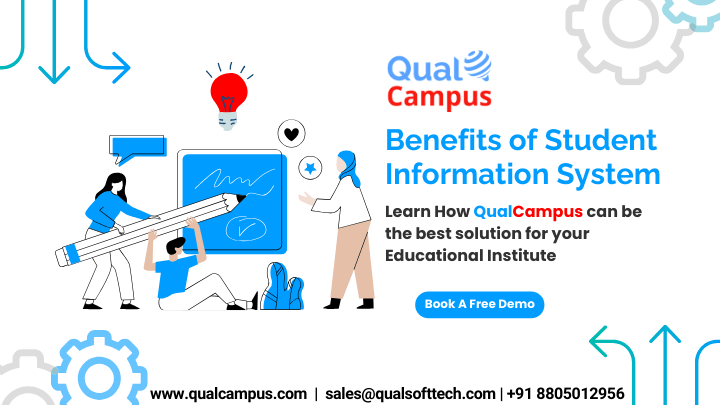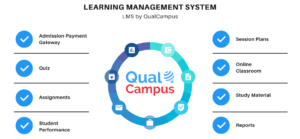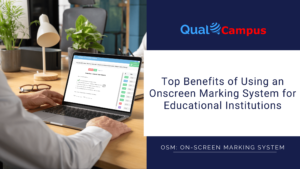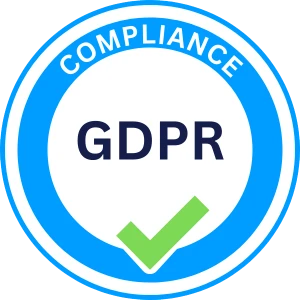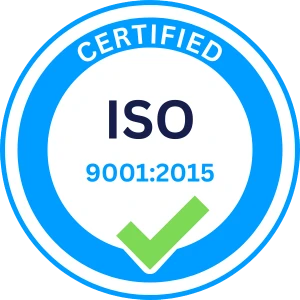In today’s rapidly evolving educational landscape, the efficient management of student information is paramount for educational institutions. The complexities of modern education systems demand a comprehensive solution to streamline administrative processes, foster better resource management, and improve overall student engagement. This is precisely where a Student Information System (SIS) comes into play.
In this extensive article, we will explore the multifaceted Benefits of Student Information Systems and delve deeper into how QualCampus SIS addresses the myriad challenges faced by educational institutes.
The world of education has witnessed a seismic shift in recent years. Traditional methods of teaching and administrative management have given way to more sophisticated and technology-driven approaches. The demands on educational institutions, whether they be schools, colleges, or universities, have grown exponentially. These institutions are tasked not only with providing quality education but also with managing vast amounts of student data, ensuring efficient resource allocation, and fostering increased student engagement.
Table of Content
The Significance of Efficient Student Information Management
What is a Student Information System (SIS)?
Core Functions of a Student Information System (SIS)
Benefits of Student Information System
Features of Student Information System (SIS)
Challenges Faced by Institutes and Solutions Offered by QualCampus SIS
Future Trends in Student Information Systems
Cloud-Based SIS Solutions
The Significance of Efficient Student Information Management
Efficiently managing student information is paramount for educational institutions to operate effectively in this dynamic educational landscape. The complexities of modern education systems demand a comprehensive solution to streamline administrative processes, foster better resource management, and improve overall student engagement. This is precisely where a Student Information System (SIS) comes into play.
What is a Student Information System (SIS)?
A Student Information System (SIS) is a comprehensive software solution that serves as the backbone of educational institutions. It is an integrated platform that streamlines administrative processes and provides a centralized database for managing student data, academic records, grades, and more.
Core Functions of a Student Information System (SIS)
A robust SIS offers a wide range of functions and features that cater to the diverse needs of educational institutions. These core functions include:
1. Admissions Management
Effortlessly manage the entire admissions process, from application submission to enrollment.
An SIS simplifies the admissions workflow, making it more efficient and user-friendly for both applicants and administrative staff.
2. Automated Grading System
Streamline the grading process by automating the calculation of grades, GPAs, and generating report cards. This feature reduces the administrative burden on educators and ensures accuracy in grading.
3. Student Management
Track and manage student records comprehensively throughout their academic journey. This includes maintaining detailed student profiles, monitoring attendance, and managing academic performance records.
4. SMS/Email Notifications
Enable effective communication between educational institutions, students, and parents. SMS and email notifications inform stakeholders about important updates, events, and deadlines.
5. 24/7 Accessibility
Provide secure and convenient access to student information and data anytime, anywhere. This feature ensures real-time responsiveness and accessibility, which is particularly valuable in the digital age.
6. Integration with Other Software
Seamlessly integrate the SIS with other educational software and platforms, enhancing overall functionality. This integration enables a smooth exchange of data between different systems, eliminating data silos.
Benefits of Student Information System
1. Provides a Single Source of Truth
One of the foremost advantages of implementing a Student Information System is that it provides a single source of truth for all student-related data. In traditional educational setups, data is often fragmented across various departments, resulting in data silos and inconsistencies. An SIS consolidates all student data into a centralized database, eliminating fragmentation and ensuring that accurate information is readily available to authorized users.
Eliminating Data Silos
In many educational institutions, student data is scattered across multiple departments, including admissions, academics, finance, and more. This fragmentation leads to data silos, where each department maintains its separate set of records and information. As a result, accessing comprehensive and up-to-date student information becomes a cumbersome process, requiring coordination between departments.
An SIS eradicates these data silos by centralizing all student-related data. Whether it’s admission records, academic performance, financial transactions, or attendance details, everything is stored in a single repository. This unified approach not only simplifies data management but also ensures that authorized users can access the most accurate and current information.
Ensuring Accuracy and Consistency
Manual data entry is susceptible to errors, leading to inaccuracies and inconsistencies in student records. Typos, miscalculations, and data duplications can create confusion and inefficiencies in administrative processes. An SIS addresses this challenge by automating data entry and validation, reducing the likelihood of errors.
Automated data entry ensures that student information is consistently recorded and updated in real time. This means that when a student’s data is modified in one part of the system, it is instantly reflected throughout the entire SIS. This level of data accuracy and consistency is invaluable for making informed decisions and maintaining the integrity of student records.
2. Centralized Database for Information Management
Managing student information involves a multitude of data points, including personal details, enrollment records, academic transcripts, and more. Without a centralized system, the management of this data can become chaotic and inefficient. An SIS resolves this issue by providing a centralized database dedicated to storing and managing all aspects of student information.
Streamlining Data Handling
With an SIS in place, educational institutions can efficiently handle and organize vast amounts of student data. All records, regardless of their nature, are stored within the same system, making it easy to locate, update, and retrieve information when needed. This centralized approach simplifies administrative tasks, from enrolling new students to accessing historical academic records.
Enhancing Data Security
Maintaining the security and confidentiality of student data is of utmost importance. Data breaches can lead to severe consequences, including legal liabilities and reputational damage. An SIS includes robust security measures to safeguard student information. Access controls, encryption, and user authentication protocols ensure that sensitive data remains protected from unauthorized access.
Improved Data Accuracy
Accurate data is the lifeblood of educational institutions. It forms the basis for critical decisions related to admissions, academic progress, financial transactions, and more. Inaccurate or outdated data can result in poor decision-making and inefficient operations. An SIS is designed to enhance data accuracy by automating data entry and validation processes.
3. Better Resource Management
Efficient resource management is crucial for educational institutions. This encompasses the allocation of human resources, physical facilities, and other assets to ensure smooth operations. An SIS aids in optimizing resource allocation, resulting in cost savings and improved overall efficiency.
Efficient Allocation of Resources
Human resources, including faculty and administrative staff, play a pivotal role in the success of educational institutions. Ensuring that these resources are allocated efficiently is essential. An SIS provides insights into faculty workloads, class scheduling, and student-teacher ratios. This data allows institutions to make informed decisions regarding staffing, course offerings, and resource allocation.
For example, if an institution identifies that certain courses have consistently high demand, then it can allocate more faculty members and resources to meet this demand effectively. Conversely, if enrollment in a particular program declines, resources can be reallocated to areas with higher student engagement. This agile approach to resource management ensures that educational institutions can adapt to changing circumstances and deliver a high-quality educational experience.
Optimizing Faculty Workloads
Balancing faculty workloads is a critical aspect of resource management. An SIS provides transparency into faculty schedules, teaching assignments, and research commitments. This visibility enables institutions to distribute workloads equitably and avoid overburdening specific faculty members.
Additionally, an SIS can assist in identifying opportunities for professional development and collaboration among faculty members. By analyzing data on faculty expertise and research interests, institutions can foster interdisciplinary collaborations and research initiatives.
4. Increased Student Engagement
Student engagement is a key driver of academic success. Engaged students are more likely to participate actively in their education, leading to better learning outcomes. An SIS empowers students by providing them with easy access to essential information about their academic journey.
Empowering Students with Information
In a traditional educational setup, students often have limited access to their own academic records. They may need to visit administrative offices or rely on periodic updates from faculty. This lack of immediate access can be frustrating for students, especially when they need timely information about grades, course schedules, or degree progress.
An SIS changes this dynamic by giving students direct access to their academic records through a secure online portal. Students can view their grades, track their progress toward degree requirements, and access information about upcoming courses—all in real time. This accessibility fosters a sense of ownership over their education and enables students to make informed decisions about their academic paths.
Fostering Active Learning
Beyond access to academic records, an SIS can support active learning initiatives. By providing tools for online collaboration, resource sharing, and communication, an SIS encourages students to engage more deeply with course materials and peers.
For instance, students can use the system to collaborate on group projects, access multimedia learning resources, and participate in discussion forums. These interactive features enhance the overall learning experience and promote active engagement with course content.
5. Improved Inter-Relations Between Departments
Effective communication and collaboration between different departments within an educational institution are essential for its smooth operation. However, traditional communication methods can be cumbersome and lead to delays in decision-making. An SIS streamlines inter-departmental relations, fostering better cooperation.
Streamlined Communication
In a paper-based or partially digitized system, inter-departmental communication often relies on physical documents and manual processes. This can result in delays, miscommunication, and inefficiencies. An SIS facilitates seamless communication by providing a centralized platform for sharing information and updates.
For example, when a student transfers from one department to another (e.g., from admissions to academics), the transition can be managed smoothly within the SIS. All relevant departments have access to the same student data, ensuring that there are no information gaps or delays in processing the transfer.
Enhanced Collaboration
Beyond communication, an SIS promotes collaboration between departments. For instance, when planning course schedules, academic departments can easily coordinate with the registrar’s office to ensure that classes are scheduled efficiently and that students can enroll in the courses they need.
This enhanced collaboration extends to data sharing as well. For example, when the finance department requires accurate enrollment data for budgeting purposes, they can access this information directly from the SIS. This eliminates the need for manual data extraction and ensures that financial decisions are based on the most up-to-date enrollment figures.
6. Enhanced Communication
Effective communication is the cornerstone of a successful educational institution. Parents, students, faculty, and administrative staff all rely on timely and accurate information to make informed decisions and ensure the smooth functioning of the institution. An SIS enhances communication in several ways.
Real-Time Communication
In a digital age, stakeholders expect real-time communication. An SIS facilitates this by enabling educational institutions to send notifications, updates, and alerts in real-time. For example, when final grades are posted, students receive instant notifications, allowing them to view their results without delay.
Features of Student Information System (SIS)
So far, we’ve explored the numerous benefits that a Student Information System (SIS) brings to educational institutions. To achieve these advantages, SIS solutions offer a comprehensive set of features designed to address the unique needs of educational institutions.
Admissions Management
Efficiently managing admissions processes is a critical aspect of educational administration. An SIS simplifies and streamlines the entire admissions journey, from initial application to enrollment.
Streamlining Enrollment
An SIS offers a user-friendly online portal for applicants to submit their applications. This portal guides applicants through the process, ensuring that all required information is collected accurately. This simplification reduces the likelihood of incomplete applications and minimizes administrative overhead.
Once applications are submitted, the SIS automates the review and selection process. Admissions staff can access applicant profiles, academic records, and other relevant information from a centralized dashboard. This streamlines decision-making, making it easier to identify qualified applicants and send acceptance notifications promptly.
Tracking Application Progress
Applicants often have questions about the status of their applications. Manual tracking and responding to individual inquiries can be time-consuming for admissions staff. An SIS provides applicants with real-time visibility into their application status through the online portal. This self-service feature reduces the burden on admissions staff and enhances the applicant experience.
Automated Grading System
Grading is a fundamental aspect of education, but it can be a labor-intensive process for educators. An SIS introduces automation to grading, simplifying the process and ensuring accuracy.
Simplifying the Grading Process
Traditional grading methods often involve manual calculations, recording scores on paper, and transferring them to gradebooks. This process is not only time-consuming but also prone to errors. An SIS automates the calculation of grades based on predefined criteria.
Educators can configure grading scales, weightings, and assessment criteria within the SIS. When assignments and assessments are graded, the system calculates final grades automatically. This reduces the administrative burden on educators, allowing them to focus more on teaching and less on manual grading.
Generating Accurate Report Cards
At the end of each grading period, educational institutions must generate report cards for students. An SIS simplifies this process by automatically generating report cards based on the grades recorded in the system. These report cards are accurate, consistent, and can be easily distributed to students and parents.
Student Management
Comprehensive student management is at the heart of an SIS. It serves as a central repository for all student
-related information, providing a 360-degree view of each student’s academic journey.
Comprehensive Student Profiles
Each student has a unique profile within the SIS, containing essential information such as personal details, contact information, and enrollment history. This comprehensive view enables educators and administrators to access the information they need quickly.
Attendance Tracking
Monitoring student attendance is crucial for both academic and administrative purposes. An SIS includes attendance tracking features that allow educators to record and track student attendance easily. This data is valuable for assessing student engagement and can be used to identify students who may need additional support.
Academic Performance Monitoring
The SIS also tracks academic performance, recording grades, test scores, and assessment results. Educators and students can access this information at any time to review progress and identify areas for improvement.
SMS/Email Notifications
Effective communication is essential for keeping stakeholders informed. An SIS includes features for sending SMS and email notifications to students, parents, and staff.
Effective Communication
Announcements, event updates, and important notifications can be sent directly through the SIS. This ensures that stakeholders receive timely information and can plan accordingly.
Timely Notifications
In cases of emergencies or last-minute changes, timely notifications are crucial. An SIS allows educational institutions to send urgent messages to all relevant parties, ensuring that everyone is informed promptly.
24/7 Accessibility
In the digital age, stakeholders expect access to information anytime, anywhere. An SIS provides 24/7 accessibility through secure online portals and mobile applications.
On-the-Go Information Access
Students, parents, and staff can access the SIS from their computers, tablets, or smartphones. This level of accessibility allows users to check grades, review attendance records, and stay updated on important events while on the go.
Real-Time Responsiveness
The ability to access information in real time enhances the responsiveness of educational institutions. Whether it’s a parent checking a student’s attendance or a teacher reviewing grades, the information is always up to date.
Integration with Other Software
In today’s interconnected world, educational institutions use a variety of software solutions to meet their needs. An SIS can integrate seamlessly with other software to create a unified ecosystem.
Seamless Data Exchange
Integration ensures that data can flow seamlessly between different software solutions. For example, an SIS can integrate with a learning management system (LMS) to synchronize course enrollment and student records. This eliminates the need for manual data entry and reduces the risk of errors.
Challenges Faced by Institutes and Solutions Offered by QualCampus SIS
While the benefits of a Student Information System (SIS) are significant, educational institutions often face specific challenges when implementing such a system. These challenges range from data fragmentation to manual data entry errors and inefficient resource management. QualCampus SIS offers tailored solutions to address these challenges effectively.
Challenge 1: Data Fragmentation
Understanding the Fragmentation Issue
Many educational institutions grapple with fragmented data. Student information is often scattered across various departments, including admissions, academics, finance, and more. This fragmentation can lead to data silos, where each department maintains its separate set of records and information.
QualCampus SIS: Unifying Student Data
QualCampus SIS addresses the issue of data fragmentation by centralizing all student-related data. Regardless of its nature, all student data is stored within the same system. Whether it’s admission records, academic performance, financial transactions, or attendance details, everything is stored in a single repository. This unified approach simplifies data management and ensures that authorized users can access the most accurate and current information.
Challenge 2: Manual Data Entry Errors
The Consequences of Manual Errors
Manual data entry is susceptible to errors, leading to inaccuracies and inconsistencies in student records. Typos, miscalculations, and data duplications can create confusion and inefficiencies in administrative processes.
QualCampus SIS: Automated Data Entry
QualCampus SIS mitigates the risk of manual data entry errors by automating data capture and validation processes. When students submit their information, whether during the admissions process or for routine updates, the SIS captures and validates the data in real-time. This automation minimizes the risk of data entry errors, ensuring that the information is recorded accurately.
Challenge 3: Inefficient Resource Management
The Impact of Resource Mismanagement
Efficient resource management is crucial for educational institutions. This includes the allocation of human resources, physical facilities, and other assets to ensure smooth operations. Inefficient resource management can lead to cost overruns and decreased operational efficiency.
QualCampus SIS: Efficient Resource Allocation
QualCampus SIS offers insights into faculty workloads, class scheduling, and student-teacher ratios. This data enables institutions to make informed decisions regarding staffing, course offerings, and resource allocation. Whether it’s optimizing faculty workloads or identifying opportunities for professional development, QualCampus SIS empowers educational institutions to manage resources effectively.
Future Trends in Student Information Systems
The field of Student Information Systems is continuously evolving, driven by technological advancements and changing educational needs. Several future trends are poised to shape the landscape of SIS.
Artificial Intelligence (AI) and Machine Learning
AI and machine learning are set to play a pivotal role in SIS development. These technologies can analyze student data to provide insights into academic performance, predict student outcomes, and offer personalized learning recommendations.
Enhanced Mobile Accessibility
As mobile devices become ubiquitous, SIS solutions are expected to provide enhanced mobile accessibility. This includes mobile apps that enable students, parents, and educators to access information and perform tasks on the go.
Personalized Learning Experiences
SIS solutions will continue to focus on personalizing the learning experience for students. By leveraging data analytics, SIS can identify individual learning preferences and adapt teaching methods accordingly.
Did you know What is cloud-based SIS?
Cloud-Based SIS Solutions
Cloud-based SIS solutions offer scalability and flexibility. They allow educational institutions to manage student data and administrative processes without the need for extensive on-site infrastructure.
Learn more about Cloud Based SIS by reading the Guide on Cloud-Based Student Information System
Conclusion:
In conclusion, the Benefits of the Student Information System (SIS) are extensive and transformative. An SIS streamlines administrative processes ensures data accuracy, optimizes resource management, and fosters increased student engagement.
QualCampus SIS stands as a powerful solution to address the challenges faced by educational institutions and empower them with efficient, technology-driven management.

